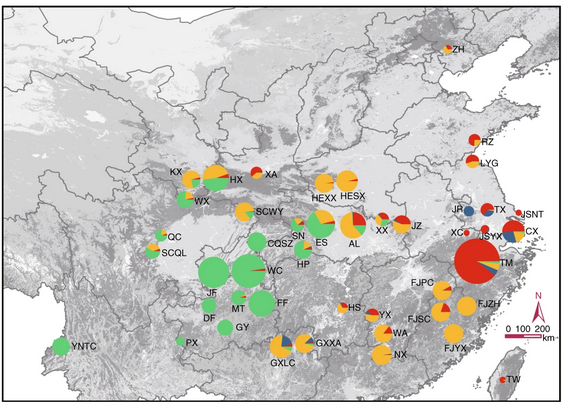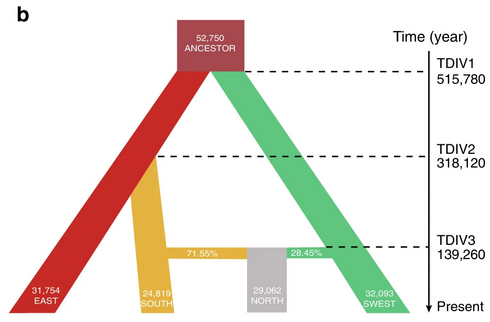As Charles Darwin put it, living fossils are an exceptional group for examining evolution issues such as extinction, competition, and adaptation. The ginkgo tree is an enigmatic living fossil, characterized by morphological stasis with almost no morphological change for at least 245 million years. A once-diverse and widespread group of gymnosperms, the ginkgo lineage has survived glaciations as a relic in China and is widely distributed all over the globe. Hence, ginkgo has long been perceived as a prime example of how people have saved a species from extinction and assisted its resurgence.
However, it remains open to contention as to whether ginkgo should be conserved. Specifically speaking, there are two core scientific questions. First, is there any relict population and where is it dispersed in China? Second, how did ginkgo survive and what is its evolutionary potential?
The team led by ZHAO Yunpeng and FU Chengxin from the Laboratory of Systematic & Evolutionary Botany and Biodiversity at ZJU's College of Life Sciences engaged in joint research in this field with the team led by GE Song from the Institute of Botany at the Chinese Academy of Sciences and researchers at China National GeneBank. They published a research article entitled "Resequencing 545 ginkgo genomes across the world reveals the evolutionary history of the living fossil" on the September 13 issue of Nature Communications.

Geographic distribution of the sampling locations. The radius of the pies represents population size, and the colors represent ancestral components (according to the substructure at K = 4).
By resequencing 545 genomes of ginkgo trees sampled from 51 populations across the world, researchers identify three refugia in China and detect multiple cycles of population expansion and reduction along with glacial admixture between relict populations in southwestern and southern refugia. They demonstrate multiple anthropogenic introductions of ginkgo from eastern China into different continents. Further analyses reveal bioclimatic variables that have affected the geographic distribution of ginkgo and the role of natural selection in ginkgo's adaptation and resilience.

Schematic of demographic scenarios modeled using fastsimcoal2, with the ancestral population shown in brown. Column width represents the relative effective population size, with the NORTH lineage inferred as a mixture of 71.55% of the SOUTH lineage and 28.45% of the SWEST lineage. The numbers on the vertical axis indicate the estimated time of population divergence.
This study provides insights into the evolutionary history of ginkgo trees and valuable genomic resources for further addressing various questions involving living fossil species.






